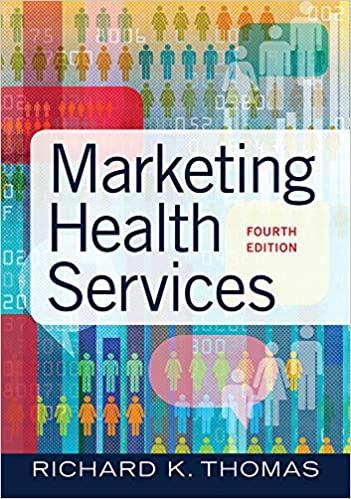During the 1980s, some enterprising healthcare professionals saw the need for an alternative to the traditional physicians
Question:
During the 1980s, some enterprising healthcare professionals saw the need for an alternative to the traditional physician’s office. While they conceded that many patients desired a long-term relationship with a physician and were willing to accept the deficiencies of the typical physician practice to obtain it, they also thought a significant portion of the population did not have an established physician relationship but occasionally required some type of care. Some of these consumers were new to their community and had not found a regular physician, while others had become disillusioned with their physician but had not yet found a replacement. Still others were dissatisfied with the conditions under which care had to be obtained—long waits for an appointment, time spent in the waiting room, short time (often only five minutes) spent with the doctor, and a big bill afterward. Out of this frustrating situation, the urgent care center was born.
The concept behind urgent care centers was to develop conveniently located (i.e., in the community) walk-in clinics staffed by the same types of physicians encountered in a doctor’s office. Each center would offer only basic services and refer patients with anything more than a minor condition to another facility. Although the urgent care center would accept insurance, it would charge a low fee to attract patients without insurance and patients with insurance who did not wish to see their regular physicians. The center would not maintain medical records beyond the basics, assuming most visits were one-time events. They would have the advantage of quick service with none of the hassle associated with a typical physician’s office.
Convinced of the demand for this type of service in a highly mobile, convenience-oriented society, physician entrepreneurs in a midsize southern city established a network of seven urgent care centers at strategically located sites. They chose fairly new suburban areas close to high-traffic commercial and retail centers, believing that these locations would attract the customers they were seeking. Having gambled on location, they faced the challenge of marketing the new concept. They brought in marketers to survey consumers to determine the best prospects for urgent care centers.
Questions
1. What factors encouraged the entrepreneurs to develop an alternative to traditional primary care?
2. What characteristics of the urgent care center concept might make it unattractive to mainstream healthcare consumers?
3. What assumptions did the developers make at the outset about the demand for such a service and the types of consumers who might use it?
4. From their marketing research, did the developers find that the urgent care center model would appeal to the general population or that some segments of the population would find it more attractive than others?
5. What was the profile of the best prospects for utilization of an urgent care center?
6. How did knowledge of the characteristics of the best prospects contribute to an effective marketing campaign?
7. Given the characteristics of the best prospects, what attributes of the urgent care centers should be highlighted in promotional material?
Step by Step Answer:






